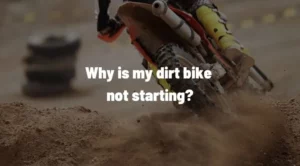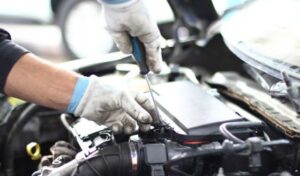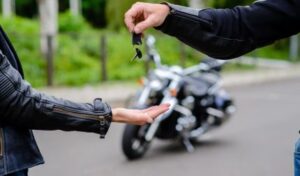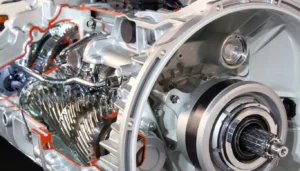When starting the motorcycle, if the you hear clicking, it can be a very irritating problem for you. I recently encountered this problem and discovered 7 potential causes that could be to responsible. Therefore, if you want to get rid of this, you must not ignore these factors, so carefully read it.
While a situation like this is undoubtedly something no one would expect, it frequently doesn’t appear until inconvenient situations.
Here are the most common reasons why your motorcycle clicks instead of starting, along with ways to fix the problem.
Why Is Your Motorcycle Clicking When You Try To Start It?
1. Dead battery
A dead battery is the primary and most likely cause of your motorcycle clicking.
The motorcycle battery is essential to the ignition process as well as the fundamental operation of the electrical, starter, and fuel injection systems on your motorcycle.
Simple battery undercharging may be the problem. Without 12.2 volts in your battery, your bike won’t start. 12.2 is currently barely halfway charged because a fully charged battery is 12.6%.
Motorcycle batteries require 12.6 volts to be regarded as completely charged. 12.2 volts is regarded as 50% charged, 12.4 volts as 75% charged, and so on.
For the motorcycle to start, you need to have at least 12.2 volts, or 50% charge. You hear the clicking sound because if it’s any lower, you probably won’t be able to start it at all.
2. Bike’s Starter is Failing
The starter system uses three main components:
The charge from the battery is transferred through the starter relay.
An electromagnetic generator is contained within the solenoid, which is responsible for turning on the starter motor.
The starter motor will then turn the engine flywheel, which will start the process of the piston’s movement and bring your bike to life.
In the event that your battery does not have a charge that is sufficient to energize the magnet, the agent’s efforts to crank the flywheel into motion will be unsuccessful.
If you have tried all of the troubleshooting methods described in the section that was just above this one, but your bike still won’t crank, the problem may lie with the starter itself.
The battery is responsible for charging the magnetization, but the starter is the component that really applies and then gradually transfers the power.
If the execution of even one of the processes that are being performed is flawed, then the entire process will be unsuccessful.
The clicking sound you are hearing is the result of a magnetization problem that prevents the starter gears from turning the flywheel.
A faulty starter solenoid is another possible source of the problem.
Your bike won’t start if the pulse from the solenoid isn’t powerful enough to engage the starter motor and turn the flywheel over and over again. It won’t do anything but create clicking sounds.
3. Seized engine
An engine that has become seized is the third most common cause, but it is far less likely compared to the previous two causes.
When an engine seizes, the parts inside the engine lock together to the point where the crankshaft can’t turn the bearings.
This happens when various components, including the pistons, piston rings, rod bearings, and so on, get too hot and effectively weld together as a result.
When an engine seizes, the flywheel is unable to turn, which results in the audible clicking sound.
It’s possible that the battery is providing enough power to the magnet for it to polarize the gear and turn the flywheel, but because there is an unbreakable amount of pressure on the flywheel, turning it effectively becomes impossible.
4. Battery losing charge
It is possible for a battery to lose its charge if an electrical component, such as a headlight or a turn signal, is left on when the motorcycle is turned off but not operating.
When the motorcycle is operating, the stator will recharge the battery, but when the motorcycle is not running, the stator will not deliver that charge.
As a result, the battery will continue to lose power even when the motorcycle is running.
5. Parasitic drain
This is typically caused by improperly grounded cables, which cause the battery to gradually lose power over time without alerting you to the fact that it is happening.
Also, if you don’t prepare your motorcycle for winter properly, the battery could freeze, which would make it lose most of its functions.
6. Aged motorcycle starter
The typical reason for a faulty motorcycle starter’s older age. Every motorcycle will probably need a new starter at some point over the course of its life.
There are a few factors that can shorten its lifespan, such as cranking it for a longer period of time than is necessary.
Because of this, electrical connections have a greater potential to overheat and melt.
7. Lack of lubrication
A motorcycle’s engine can seize if it doesn’t have enough oil, gets too hot, or hasn’t been used for a long time. This can make it hard to start the bike.
How To Fix A Clicking Motorcycle When Trying To Start It
1. Fix Battery issue
In that case, you can try charging the battery to see if that fixes the issue. Charging the battery of a motorcycle might take anything from eight to twenty hours to complete.
It is an easy problem to fix, but doing so will take some time, and you may need to make other arrangements for means of transportation in the meanwhile.
If you have already charged your battery but your motorcycle continues to make that clicking sound when you want to charge it, you can take your battery to an automotive parts store and have them test it.
2. Solving engine problem
If your vehicle has a kick-start engine, one of the telltale signs that the engine is frozen is that the kick pedal will not move at all.
This is because the components within the engine are seized in their current positions, thus the pedal cannot be moved.
If you don’t have a kick starter engine, rolling the bike is another straightforward method for diagnosing a seized engine that you might try.
Because of a deficiency in lubrication, a bicycle’s engine might seize up, rendering it basically useless and even leading to the starting problems that have been detailed below.
Because of this, it is imperative that the oil be changed and topped off periodically on any bike.
Rust and corrosion can form inside your engine if you don’t keep it properly oiled, which can lead to increased flywheel resistance.
Nevertheless, the engine will eventually overheat, which will cause the components of the engine to fuse together and become permanently damaged.
A motor that has seized is almost certainly beyond repair. If this is the case, then I’m afraid you’re going to have to get a new motor for your bike because it makes clicking noises when you try to start it.
Put your best foot forward in the event that it isn’t, or if it is and you’ve come to terms with the fact that you have to replace your engine,
Altering your bike’s oil and doing inspections should be part of its regular maintenance at regular intervals.
The most important part of maintaining your motorcycle is to change the oil on a regular basis.
The most common reasons for a motorbike engine to seize are not keeping up with the oil levels and condition, using oil of a low quality, or using oil that has been contaminated.
3. Get a new starter
Restoring the connectors is one possible solution for repairing a starter solenoid that is no longer functioning properly.
When corrosion is removed, it can sometimes extend the life of the starter by several years, putting off its replacement for longer.
However, all starts and solenoids will ultimately wear out, which is why it is preferable to replace the starter as a whole rather than the individual components.
If the solenoid on the used starter is worn, it’s possible that the motor is also worn.
It may seem like a waste of time and effort to replace your starter’s solenoid and then reinstall the old starter, only to have to take everything out again not long after when the rest of the parts stop working.
It is possible to remove the starter, remove the solenoid, and make an attempt to repair or replace it; but, if you want the problem solved as quickly as possible, your best chance is to simply replace the starter itself.
4. Turn Off electrical components when the motorcycle is not running.
When your motorcycle is turned off, you should not use any electric components of it for any longer than is absolutely necessary.
It’s fine to turn on the headlight once in a while, but you shouldn’t make it a regular part of your routine.
In addition to this, if it is going to be some time before your next ride, you should make sure that your battery is connected to a battery tender.
When you turn off your motorcycle and stop using it, the headlights and blinkers should also be turned off. This will prevent the battery from losing any charge.
5. Prevent your starter from aging
When it comes to your starter, there is not a whole lot that you can do to prevent its natural aging process from occurring.
When you are starting your motorcycle, you will want to be sure that you do not crank the starter for a significantly longer period of time than is necessary. That will result in it going out earlier than it normally would.
6. Routine oil changes are the single most important thing you can do for your engine.
Your engine will seize if you are using old oil or if you do not use enough oil, which will prevent you from starting your motorcycle. Change the oil on your motorcycle on a regular basis, and always use the type of motor oil that is recommended for it.
Final Thoughts
There are three primary reasons why a motorbike will click instead of starting, and they are a dead battery, a starter that is malfunctioning, or, in extreme circumstances, a seized engine. If the motorcycle is older or has seen a lot of use, it is more likely to have one of these problems.
During times of emergency, nobody anticipates a situation like this to occur. You should now understand what is wrong with your motorcycle, why it is clicking when you are attempting to start it, and how to repair it, thanks to the important information that was supplied in the previous section.






